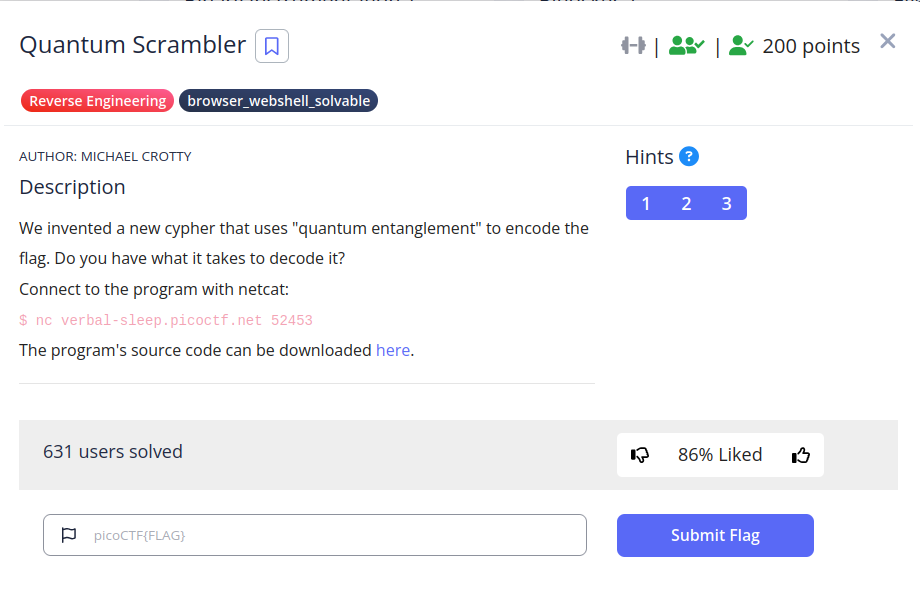Problem

Solution
We are given the following script:
import sys
def exit():
sys.exit(0)
def scramble(L):
A = L
i = 2
while (i < len(A)):
A[i-2] += A.pop(i-1)
A[i-1].append(A[:i-2])
i += 1
return L
def get_flag():
flag = open('flag.txt', 'r').read()
flag = flag.strip()
hex_flag = []
for c in flag:
hex_flag.append([str(hex(ord(c)))])
return hex_flag
def main():
flag = get_flag()
cypher = scramble(flag)
print(cypher)
if __name__ == '__main__':
main()From main, we see that first the flag is converted into a list of hexadecimals in get_flag, then scrambled.
We are given one such example of this in the file enc_flag (which I have omitted for brevity). By encoding a simpler message (e.g. “abcdef”), we can get a better feel for what scramble does:
[['0x61', '0x62'], ['0x63', [], '0x64'], ['0x65', [['0x61', '0x62']]], ['0x66']]
Recall that in ASCII:
- “a” = 61
- ”b” = 62
- And so on
We might observe a bit of a pattern - each letter is stored in order within a nested list, and is only ever repeated within a further nested list.
So what happens if we simply remove any nested lists and flattened the result? We’re left with the hex-encoded flag. Decode it and we’re done. I wrote the following script for this:
Script
import itertools
def unscramble(L):
A = L
for a in A:
for idx, elem in enumerate(a):
if isinstance(elem, list):
a.pop(idx)
return list(itertools.chain.from_iterable(A))
def get_flag(hex_flag):
flag = ""
for i in hex_flag:
curr = int(i, 16)
flag += chr(curr)
return flag
def main():
with open("enc_flag", "r") as f:
c = eval(f.read())
unscrambled = unscramble(c)
flag = get_flag(unscrambled)
print(flag)
if __name__ == "__main__":
main()